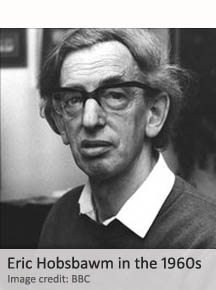Newly released British files shed light on 20th-century espionage
October 27, 2014 1 Comment
 By IAN ALLEN | intelNews.org
By IAN ALLEN | intelNews.org
Files released last week by Britain’s National Archives have brought to the fore interesting new clues on the history of intelligence operations in the 20th century. One of the files relates to Migel Piernavieja del Pozo, a Spanish journalist in his mid-20s, who arrived in the United Kingdom in 1940, ostensibly to cover British public attitudes to the war in the continent. Britain’s counterintelligence agency, the Security Service, also known as MI5, placed Pozo under surveillance, after the debonair Spaniard proclaimed in public meetings that he was grateful for German Chancellor Adolf Hitler’s support to Spain’s royalist forces and said he hoped Germany would emerge victorious from the war in Europe. The agency was right to do so, as Pozo eventually approached an agent of the Abwehr —Nazi Germany’s military intelligence agency— in the UK, and told him that he too was working secretly for Berlin. But the Abwehr agent, codenamed GW in MI5 documents, was in fact a double spy for the Crown and managed to pass deceptive information to the Spaniard. Eventually, Pozo gave GW a tin of talcum powder containing over £3,500 in banknotes, which is approximately $150,000 in today’s money. Professor Christopher Andrew, official historian of MI5, told The Daily Telegraph that the money supplied by Pozo was “probably the largest sum yet handed to a British agent” by a rival spy. Eventually, Pozo’s inability to acquire useful intelligence in the UK prompted his recall back to Spain.
Another set of files, also released last week by the National Archives, appears to show that C.A.N. Nambiar, a friend of India’s first prime minister and deputy to one of the country’s most fervent pro-independence activists, was a Soviet spy. Nambiar was known as an old comrade of Jawaharlal Nehru, the first elected leader of post-colonial India, who dominated Indian affairs for much of the last century. He was also a close associate of Subhas Chandra Bose, a pro-independence activist considered a hero by Indian nationalists, whose hatred for India’s British occupiers led him to side with Nazi Germany and Imperial Japan in the early 1940s. After India’s independence in 1947, Nambiar worked as a diplomat in Berne, Switzerland, before becoming India’s ambassador to Sweden and later to West Germany. But according to MI5 documents released last week, an Eastern Bloc defector fingered Nambiar in 1959 as an agent of Soviet military intelligence, known as GRU. The source said Nambiar had been recruited while visiting the USSR as a guest of the Soviet state in 1929.
British newspaper The Guardian reported late last week that yet another set of documents released by the National Archives shows that MI5 collected “hundreds of records” over several decades on two leading British historians, Christopher Hill and Eric Hobsbawm. The agency also maintained files on Oxford University professor AJP Taylor, the philosopher Mary Warnock, and the writer Iris Murdoch. The reason appears to be that Hill and Hobsbawm were members of the Communist Party of Great Britain, while the others signed an open letter in favor of abolishing Britain’s nuclear arsenal. According to The Guardian, these leftist intellectuals underwent “decades of persistent surveillance” by MI5, as the agency “tapped and recorded their telephone, intercepted their private correspondence and monitored their contacts”. But there is no evidence in the declassified files that any of them ever spied for the USSR or that Moscow tried to recruit them for that purpose.







Reblogged this on matangala.